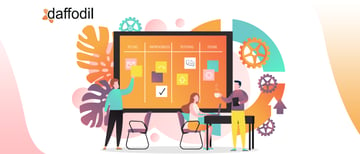
Fervently focused on delivery - the pharmacy industry on its constant hunt for a breakthrough has hit the spot with automation.
An arrow in the quiver, pharmacy automation has made juggling the rising demand for cutting-edge products, and exceeding competition easy for pharmacists, clinicians, and even pharmaceutical companies.
Tablet counters, compounding systems, medication dispensers, and other pharmacy automation products continue to see a hike. With an estimated CAGR of 10.8 percent about $20 billion till 2025 the pharmacy automation market seems busy breaking new grounds.
The automation system packs a punch in efficiency, integration, and productivity. What’s more? Pharmacists can devote more time to patient care and safety.
So, what is Pharmacy Automation exactly?
Simply put, pharmacy automation is the automation of the common but time-consuming tasks in a pharmacy such as dispensing, packaging, tracking, updating, and retrieval of medication. It also includes managing customer information, medical history, and interaction with drugs.
It eases out the activities which the pharmacists have been performing manually for long.
Tech changes that took place in the Pharmacy Industry
Since the 2000s, robotics, Interactive Voice Recognition (IVR), outpatient management, inventory management software has been put in action. Scalability advanced off in pharmacy during this time. An entry-level drug could now be easily taken to automation i.e. counting technology to robotics.
Automation became a necessity for pharmacists especially stand-alone outlets to compete with big chains.
Next-generation verification systems were installed in 2008 in the US. Taking a cue from the counting technology in the previous system, this model made operations more efficient. The dispensing of medication became more accurate with the checks and balances feature.
In 2009, hands-free dispensing counters were designed allowing pharmacists to automate the process of the common over-the-counter drugs.
Small-time pharmacies may face initial hiccups pertaining to the cost of implementation but eventually gain a lot from automation technology. The investment is worth a high productivity curve.
Also Read: 10 Top Technologies For A Seamless EHR Integration
Here’s how you benefit by automating Pharmacy System
Apart from eliminating errors while prescribing, administrating, and dispensing medication there are more advantages of automated pharmacy system.
Improved Accuracy: You are aware of the hassles stemming from inaccurate doses or the incorrect substitutes of some unavailable drugs at a pharmacy. The situation is not just inconvenient but puts the pharmacists and their customers at risk. The technology, as it evolves, reduces the risk of human errors or human-induced machine errors. The pharmacy automation solutions make dispensing the correct dosage of the prescribed drug a cinch. It can also notify in case of the unavailability of the correct substitute.
Better Inventory: For a successful and smooth run in a pharmacy you need better control over inventory. Automation solves that for you. No more data entry on paper and storing a stack of tickets. By automating, you can benefit from the real-time log of drugs being accessed by your employees. This further reduces the wastage of medication and keeps track of the most bought prescriptions.
Enhanced Workflow: A report by the National Centre for Health Statistics, states that about 46 percent of people in the US take prescription drugs. As mentioned above manual efforts at a pharmacy won’t be able to meet the increasing need for prescription drugs. It will be a struggle and a challenge to cater to the growing demand. Automation can help scale up the process and spike up the productivity of your staff.
Better Patient experience: As an extension to the above point, your staff can now utilize their increased productivity to improve the patient experience. With more time at hand, they can better assist, recommend, and provide insights to the customers about the medication they intend to buy, its substitutes, administration, and more.
Reduced Labor Costs: This one doesn’t come as a surprise. We all know the biggest and the most obvious advantage of automation – reduction in costs. With automation in place, pharmacies can now save money on hiring and training staff while also diminishing manual errors in the workplace. Be it labelling, dispensing medication, or any other day-to-day function, automated systems work with a higher degree of regulation and effectiveness than humans.
Also Read: Healthcare Informatics: Then, now and the future
What Does the Future look like?
The future of pharmacy automation will primarily focus on two models: dispensing medication and care management.
In dispensing prescription to patients, the emphasis will be on the gradual decline in the need for human involvement for a quicker, more accurate, and swift solution.
The second model will deal with patient care management. This can be implemented to cut down on unnecessary visits to clinicians or physicians, fostering a feedback system at pharmacies itself.
In Sum
There is no standard automation system for manufacturers or business owners. Every stakeholder approaches automation with different needs in mind. It can be arduous to come up with an automation solution that works out for you. But there is always help around the corner. Right? And we are here to provide just that. Go for a free consultation with our experts to plan your project.



